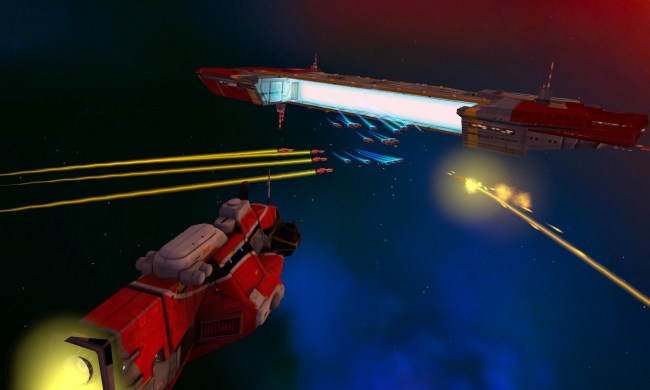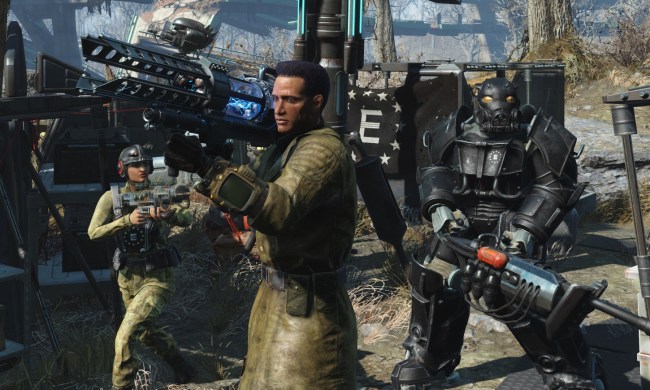When it comes to video game genres, it can feel like reading a different language. Every major genre has multiple fractures and splinters coming off of it, such as RPGs being broken down into JRPGs, WRPGs, CRPGs, ARPGs, and more. Horror is no exception, though the way it’s been carved up like a jack-o’-lantern is especially notable. It isn’t unique that horror games use subgenres to describe mechanics, however, those classifications can pull double duty. They communicate how the games will attempt to scare you.
The major horror subgenres in games are typically broken down into four categories: survival horror, stealth horror, action horror, and perhaps the most highly regarded (and likely misunderstood), psychological horror. You could break these down into even more granular sub-subgenres, but these encompass the vast majority of what the genre has to offer. Not sure what type of horror is for you? Let’s break down each subgenre and dissect how they instill fear in players.
Survival horror

Survival horror is debatably what brought horror games into the mainstream. This is where titles like Alone in the Dark, Resident Evil, and Clock Tower fit in, and it remains the most popular subgenre in horror games. These types of games combine elements from all the others on this list. There is combat, though you are almost certainly de-powered compared to your enemy either in terms of power, resources, ability, or just sheer numbers. Puzzle elements are usually involved as well, but not always.
On its face, the “survival” part of survival horror doesn’t mean much — basically every game is about survival. However, the survival element tends to come in the form of resource scarcity, forcing players to ration ammo, health, or any other necessary items. Survival horror games, when designed well, will leave players constantly in fear of running out of resources.
Take the Resident Evil games as a key example. What makes exploring the mansion or RCPD terrifying isn’t simply the zombies and monsters. Sure, they’re good for a shock and a looming sense of dread, but beyond that, it’s the fact that players know that they only have so much ammo on them at any given time. Is it worth shooting this zombie and wasting a precious bullet, or is it safer to run around them? Even saving was a limited resource in the original Resident Evil, with limited typewriter ribbons that were needed to save progress. Save at a bad time, or too often, and you could actually put yourself in a situation where you had to restart the entire game.
The fear in survival horror bleeds out into the real world without breaking the fourth wall by getting into the head of the player each time they need to decide what item to take, enemy to kill, or healing item to use.
Stealth horror

Stealth horror games either nearly or completely remove the player’s ability to fight back in any way. These are games about avoiding spooky entities, like in Amnesia: The Dark Descent, Outlast, and Alien Isolation. Here, the fear comes directly from the monster. Unlike survival horror, where both flight and fight responses are open, your only choice is to run and hide.
Good stealth horror builds tension by turning the fear of being spotted by a monster into a life-and-death moment. All you can do is sneak, hide, and watch. This type of horror most easily translates from film, in which an unstoppable killer or monster is after the protagonist who, for the most part, can do nothing to physically stop them. Stealth horror games remove the power fantasy inherent to action games, leaving players helpless if the predator chasing them so much as turns its head at the wrong moment.
The downside to this trick is that it can lose its scare factor fast. Fail too often, and the shock of being caught dulls, no matter how gruesome that death animation is. These games need tight design to avoid any sense of tedium upon failure or else players will groan at the idea of slowly sneaking through a long level instead of holding their breath with a clenched jaw.
Action horror

Action horror is usually where true horror fans tend to fall off. These are games that function like your typical action game, but placed in a horror-themed setting. Think Resident Evil 6, the Dead Space trilogy, or F.E.A.R. They’re more like exploring a haunted house with an assault rifle — you may jump here and there, but you have the power to easily fight off anything coming your way.
This style of horror isn’t out to leave a lasting impact on the player. Jump scares and disturbing enemy and environment designs may give you a slight sense of unease, but generally speaking your character’s power is at the level of a normal game. Aside from the atmosphere, and perhaps limiting your vision and sense of direction, these types of games are the most fun in the traditional sense, but not fully committed to inspiring dread.
This is by no means a lesser form of horror — rather it just caters to those who more enjoy the aesthetics of horror, but feel excluded based on the difficult gameplay other genres tend to use. We all saw how much more popular Resident Evil 2 remake became just by leaning a bit more in the action direction in its gameplay compared to the clunky tank controls of the original.
Psychological horror

According to Bernard Perron in his book Horror Video Games: Essays on the Fusion of Fear and Play, psychological horror games “seek to instigate a sense of doubt about what might really be happening.” That’s just the tip of the iceberg when it comes to the power of the genre, as Dawn Stobbart elaborates on in Videogames and Horror: From Amnesia to Zombies, Run! “In narratives that employ psychological horror for their effect, the main feature is what is not seen, rather than what is and the effect that the narrative — in whatever form — has on the audience.”
While Silent Hill 2, often cited as the greatest psychological horror game, accomplishes a lot in terms of tone, it’s the steps it takes beyond atmosphere that really make it a psychological horror classic. The fog, sound design, and monsters formed from main character James’ mental anguish evoke “normal” horror — claustrophobia, disgust, shock — where the real psychological element is in the unexplainable fear you feel. What could be lurking in the fog? What is making those sounds? And most importantly, is any of this even real, or all in James’ mind?
It’s that lasting, lingering impression a horror game leaves that makes it a true psychological experience. The game must plant seeds of doubt and be able to leave many issues ambiguous to become lodged in the player’s mind. The mark of a true, great psychological horror game is if it causes you to rethink or question aspects of yourself completely divorced from the fear of any monster.
Horror is typically one of those love-it-or-hate-it genres. However, the subgenres within it can offer diverse experiences that cater to different players’ tolerance for fear. From mechanics, tone, themes, and lasting impact outside of the game, there’s a subgenre that is sure to get under your skin whenever you feel the urge to get a little outside your comfort zone.



